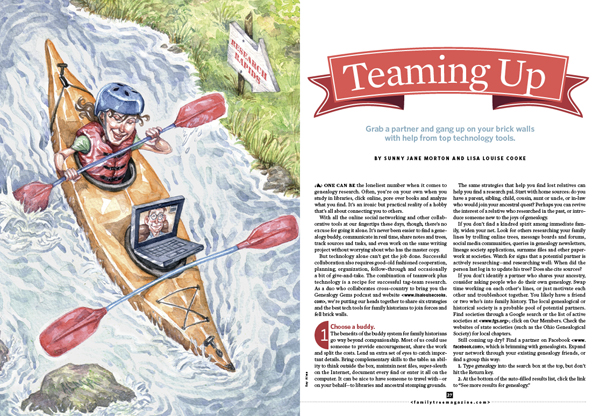How to Get Dual Italian Citizenship
Learn how to get dual Italian citizenship using genealogical information with my guest professional genealogist Sarah Gutmann of Legacy Tree Genealogists.
Watch Live: Thursday, May 12, 2022 at 11:00 am CT
(calculate your time zone)
Three ways to watch:
- Video Player (Live) – Watch video premiere at the appointed time in the video player above.
- On YouTube (Live) – Click the Watch on YouTube button to watch the YouTube premiere with Live Chat at the appointed time above at the Genealogy Gems YouTube channel. Log into YouTube with your free Google account to participate in the live chat.
- Video Player above (Replay) – Available immediately after the live premiere and chat.
Show Notes
My special guest is Sarah Gutmann. Sarah began her obsession with family history when she was 13-years-old. She now has almost three decades of experience helping others climb their family tree. She is a professional genealogist with Legacy Tree Genealogists where she specializes in United States and Italian research. As a veteran classroom teacher, Sarah enjoys teaching various genealogy programs to libraries, historical societies, and lineage organizations across America.
Obtaining Italian Dual Citizenship Overview:
- Who can become a citizen?
- Finding out when your ancestor naturalized and obtaining those documents
- Identifying your ancestor’s specific commune (village)
- Using the Italian archives site
- Requesting vital records from Italy
- Obtaining long form vital records with an Apostille (American records)
Who can apply for dual Italian citizenship?
The following list refers to examples of some categories of eligible persons:
- Direct Descent: from an Italian-citizen parent (if maternal side, after January 1 st, 1948) born in Italy and they were still Italian citizens at the time of the Applicant’s birth. The Applicant and their parents must have never renounced their Italian citizenship. Naturalizations occurred prior to August 15th, 1992 constituted renouncing ones’ Italian citizenship.
- Through Descent: from an ancestor born in Italy who was an Italian citizen at the time of the birth of their child. The Italian citizenship would pass through the generations up until the Applicant (the maternal branch could pass on Italian citizenship to children born after January 1, 1948), provided that none of the descendants in the straight line lost/renounced their Italian citizenship, such as through naturalization prior to August 15th, 1992.
- From an Italian-citizen mother to a child born before January 1st, 1948: applicants who fall into this category will have to appeal to an Italian civil court to obtain the recognition of citizenship.
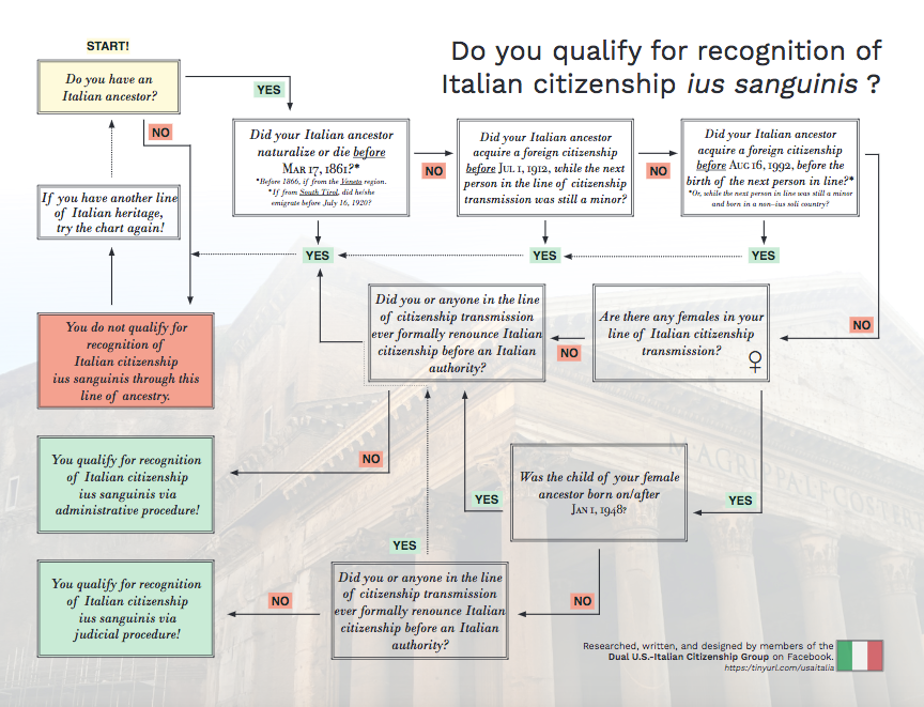
Italian dual citizenship process chart (Source: Dual U.S. Italian Citizenship Facebook Group)
How Do I Know When My Ancestor Naturalized?
Using Census Records:
- Take note of the year of immigration
- Look for passenger records
- Naturalization
- AL- Alien
- NA- naturalized
- PA- have submitted the first papers to become naturalized
- Find Them at Family Search – FREE!
Use the census record as a guide to what court your ancestor may have naturalized through.
Looking for Naturalization Records
- Prior to September 27, 1906, any “court of record” (municipal, county, state, or Federal) could grant United States citizenship.
- Beginning September 27, 1906, naturalization was done through the Federal courts.
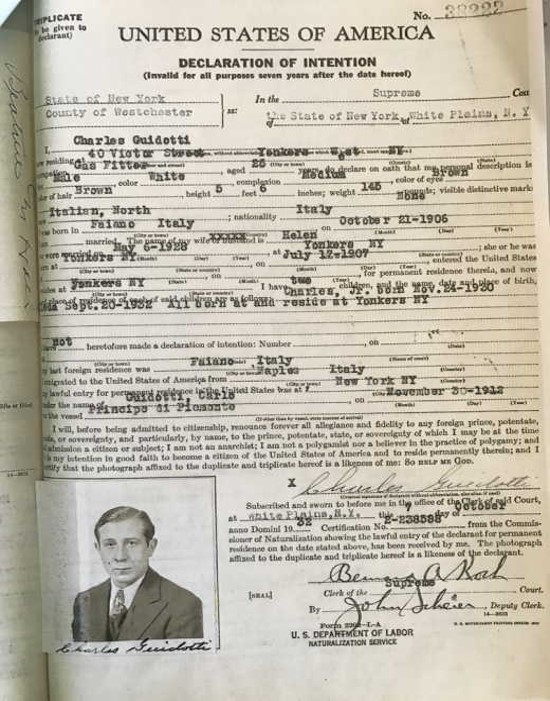
Example: Naturalization Declaration of Intention
Contact U.S. Citizenship and Immigration Services. They have records from 1906 forward.
Order an “Index Search”
On the Genealogy page at the U.S. Citizenship and Immigration Service website click Order an Index Search or Record Request.
Provide as much information you know about the immigrant
- Name
- Addresses in America
- Birthdate and place
- Household members
- Year of immigration
Order Record Request with Request Case ID.
Did Your Immigrant Ancestor Naturalize AFTER Their Child Was Born?
Start Gathering Vital Records!
Vital Records Issued by Italian Authorities
Here are the Italian vital records for events which took place in Italy:
In Line Relatives:
- Birth Certificate: Original Extended Certified Copy Issued by the Comune, with names of parents
- Marriage Certificate: Original Extended Certified Copy Issued by the Comune, with names of parents, and any annotations of divorces
- Death Certificate: Original Extended Certified Copy Issued by the Comune, with names of parents
Out of Line Relatives if born in Italy:
- Spouse’s Birth Certificate: Photocopy of Certificate Issued by Comune in Italy
- Spouse’s Death Certificate: Photocopy of Certificate Issued by Comune in Italy
Finding the Italian Village of Origin
Here are some of the records that may include your ancestor’s village of origin:
- Naturalization Record
- Ship Manifest
- Draft Record
- Vital Records (Birth, Marriage, Death)
- Obituary
If you don’t have success with your ancestor’s records, try searching your Ancestor’s FAN CLUB (Friends, Associates, Neighbors). These are the people who may have come from the same village. Search for their records as listed above.
Contacting the Italian Comune
- Use Comuni-Italiani.it to locate your comune’s website
- Find the comune’s email address and regular mail address
- Write a request letter in Italian and include your i.d. (Letters are available in the “forms” at the Consulate Generale website)
- Follow up! Follow up!
The Comuni-Italiani.it Webiste
Website: http://www.comuni-italiani.it/
This website provides Information and statistics on municipalities, provinces and regions in Italy. You’ll find links to official websites, zip code, number of inhabitants, banks, schools, pharmacies, maps, weather forecast, and other useful links.
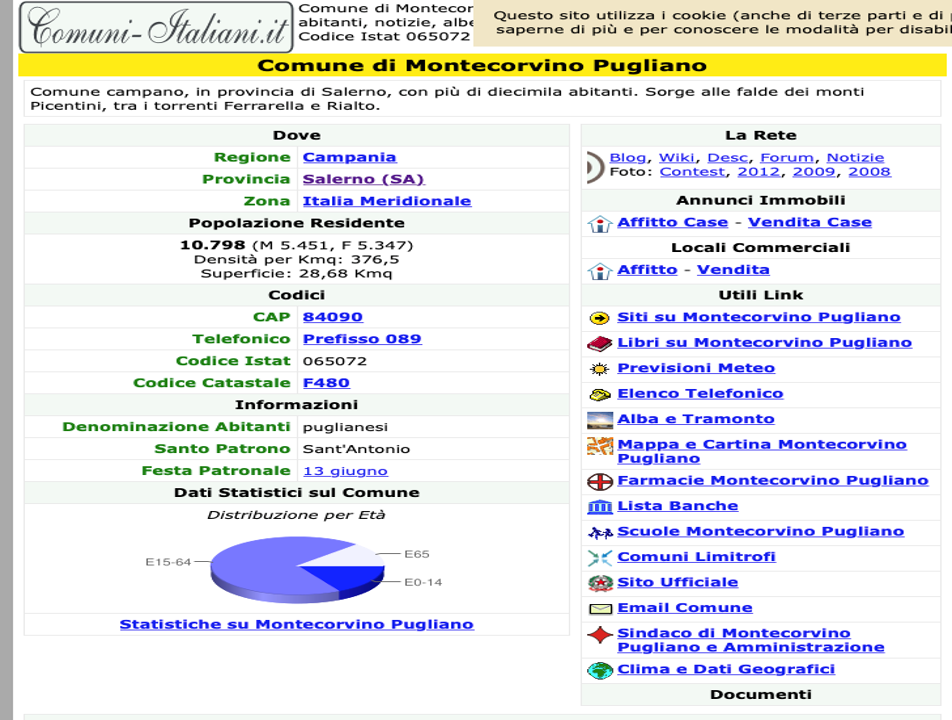
Website: http://www.comuni-italiani.it/
Here’s an example of the official Italian document you are trying to obtain:
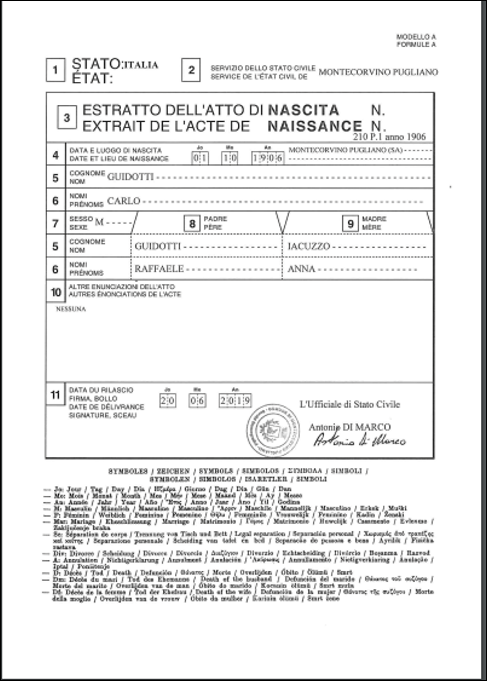
The goal
This is your golden ticket to the Italian consulate and getting that coveted citizenship.
Vital Records Issued by Non-Italian Authorities (American Records)
In Line Relatives ORDER NEW DOCUMENTS
- Long Form Original Legalized by the Apostille & Translation of Document Only
- Birth Certificate
- Marriage
- Divorce
- Death Certificate
Out of Line Relatives
- Photocopy of birth and death
What is an Apostille?
An Apostille (pronounced “ah-po-steel”) is a French word meaning certification. An Apostille is a specialized certificate, issued by the Secretary of State. The Apostille is attached to your original document to verify that it is legitimate and authentic.
Research your General Italian Consulate
- MAKE YOUR APPOINTMENT!!!!
- Fill out Citizenship forms
- Download checklist and instructions
Resources
Downloadable ad-free Show Notes handout for Premium Members.
Learn more about becoming a Genealogy Gems Premium Member.
Today Sept. 10 Only: Virtual Conference Giveaway
I always enjoy being a presenter at the cutting-edge Family Tree Magazine Virtual Genealogy Conference. This time around I’m teaching Best Apps for Genealogy! And today I am giving away one free virtual conference registration to a lucky Genealogy Gems reader. Read through the following article about the Virtual Genealogy Conference to learn how to enter. And do it today because you must be entered by midnight (Pacific) tonight Sept. 10:
8 Great Reasons to Attend a Virtual Genealogy Conference
Family Tree University’s Fall 2013 Virtual Conference Sept. 13-15 offers unique benefits
Have you ever missed a genealogy conference session you wanted to attend because the room was too full, or because the time conflicted with another session of interest? Or heard how great a session was after the fact, and lamented that you didn’t choose it?
That’s just one of the problems solved by Family Tree University’s Virtual Conferences. These three-day online workshops are the only genealogy conferences where attendees can completely customize the program to suit their schedule. Attendees can watch 16 pre-recorded 30-minute classes at any time, in any order they choose.
Attendees of the Winter 2013 Virtual Conference, Sept. 13-15, will enjoy the following unique benefits:
» All sessions can be downloaded for later viewing—allowing you to watch favorite sessions again or save certain classes to view after the conference ends, so you can make the most of the real-time interaction during the weekend.
» PDFs of the presentation slides from each class are available to download, too, eliminating the need to take copious notes or copy down website URLs.
» The conference takes place entirely online, allowing attendees ultimate flexibility for participating. It’s the only conference where you can show up at 2 a.m. in your pajamas if you want to! Log in anywhere you have a computer and an internet connection, from your favorite armchair to your favorite coffee shop. You can even squeeze in a live chat during Daughter’s soccer game.
» An FTU Virtual Conference also provides programming from nationally known genealogy presenters, including D. Joshua Taylor, Lisa Louise Cooke and many more. You don’t have to miss out if you can’t afford a hotel room or have physical limitations that make an in-person conference impractical.
The Virtual Conference also offers perks provided by in-person conferences:
» An exhibit hall with booths showcasing genealogy products and services
» A virtual swag bag of free downloadable genealogy goodies
» Daily contests for great genealogy prizes
» Opportunities to chat with and ask questions of experts, as well as make new friends of genealogy buffs just like you
To view the program and register for the Fall 2013 Virtual Conference, visit http://www.familytreeuniversity.com/virtual-conference (save 20% on registration with coupon code FTU0913 at checkout!). Enter my giveaway by sharing this blog post on Facebook or Twitter by midnight tonight with hashtag #GENEALOGYGEMS. You’ll find social media sharing buttons at the top of the post, or just copy and paste the URL address of this specific post (click the post title to be sure and grab the specific address) and include #GENEALOGYGEMS. The winner will be announced here on this blog on Wed. Sept. 11 and must email their contact information to me as instructed in the post. Good luck, and I hope to see you at the Virtual Conference!
No purchase necessary. Void where prohibited. Entries must be received by midnight Sept. 10, 2013 as directed.
Tips for Collaborative Genealogy: Sharing Genealogy Files Online for Free
 One of the most important things we do as genealogists is share! We share research findings, family stories, trees, heirloom photos and more. These days, sharing online is often the way to go. It’s fast, it’s relatively organized, it gets things into the hands of those who want them and (often) it’s free!
One of the most important things we do as genealogists is share! We share research findings, family stories, trees, heirloom photos and more. These days, sharing online is often the way to go. It’s fast, it’s relatively organized, it gets things into the hands of those who want them and (often) it’s free!
To wrap this series of blog posts on collaborating, I offer 4 ways to share genealogy online (in addition to Dropbox and Evernote, which we discussed in previous posts).
1. Attach scanned documents, photos and stories to your online tree. Whether you keep a tree at MyHeritage, Ancestry, FamilySearch or another site, beef it up with everything you have. That only enriches the body of knowledge out there and gives others a leg up on the next bit of research. You can also include links to applicable notes in Evernote.
2. Post gravestone photos and other burial information at online cemetery sites. BillionGraves and Find A Grave are the two big ones, of course. These sites provide searchability and a platform for collaboration between descendants.
3. Post meaty queries that show what you know and what your questions are. RootsWeb and USGenWeb are two enormous sites, organized by location and topic, where you can post questions about people, places and more. Check out this page on how to write a good query and this Cyndi’s List portal to various message boards. TIP: Remember to include all important related keywords, name and location spellings, and dates in your messages so they are easily found by your long lost cousins using Google!
4. Publish your research. Genealogy newsletters, magazines and journals of all levels (from the local to the national and beyond) want your well-researched, well-written research. What’s a chunk of research you could share? Look for publications that are indexed in PERSI, the Periodical Source Index, because other genealogists are most likely to find your work when it’s indexed there. Of course, family history websites, blogs and books are all great ways to publish your research, too. Just get it out there!
As the online genealogy community continues to grow, our opportunities to grow bigger, better family trees also grow. So my question to you is: What do you have to share? And have you begun?
Check out the magazine article that inspired this series of posts on collaborating. It’s “Teaming Up,” and it appears in the December 2013 issue of Family Tree Magazine. Sharing genealogy files is just one topic we cover. The article itself was a cross-country collaboration between myself and Genealogy Gems Contributing Editor Sunny Morton. To write it, we relied on a lot of the same tips and tools we recommend!
Finally, check out my previous blog posts in this mini-series on collaboration:
Tips for Collaborative Genealogy: Research with a Partner
Tips for Collaborative Genealogy: Dropbox for Genealogists
Tips for Collaborative Genealogy: Evernote for Genealogists



